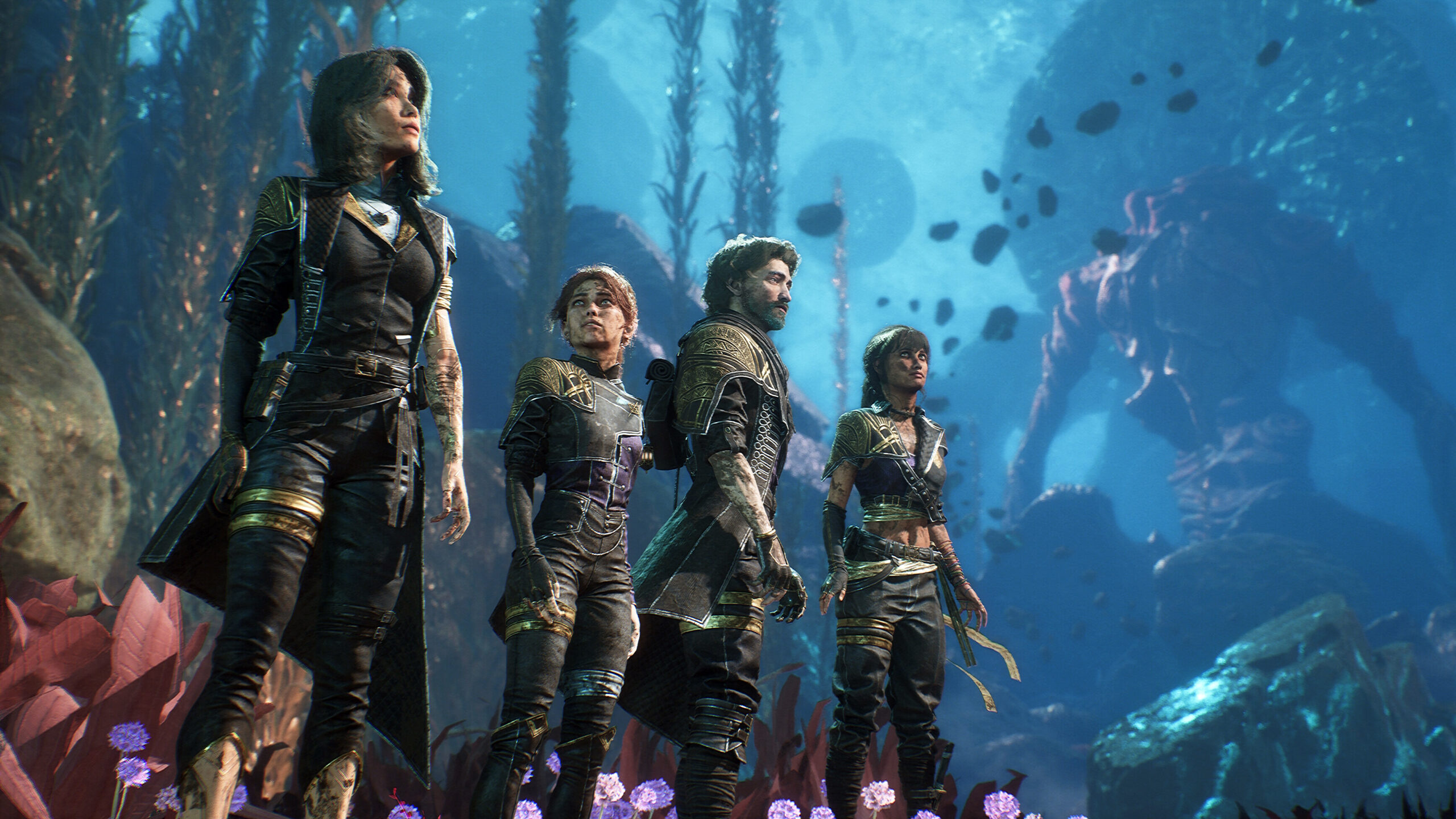Arkane Studios celebrated 24 years of business this month with a social media post that commemorated almost all of its games. In the line-up was subterranean RPG Arx Fatalis and extraordinary FPS experiment Deathloop. So was System Shock tribute Prey, as well as all three Victoriana stealth-action games set in the Dishonored universe.
Even this year’s disappointing vampire shooter Redfall, which recently had its teeth sharpened with a much-needed update, got its star in the Arkane walk of fame. Yet one title was conspicuous by its absence: the chaotic orc-kicking simulator, Dark Messiah of Might & Magic.
This month marks the 24th anniversary of Arkane Studios first opening its doors. Thanks to our passionate players around the world who have humbled us by spending so much time in our worlds! Can’t wait to show you more! pic.twitter.com/Cpviti2VL5October 13, 2023
Perhaps that’s a licensing issue, rather than a qualitative judgement: Dark Messiah was published by Ubisoft, rather than Arkane’s longtime owner, Bethesda. But the snub serves to cement Dark Messiah’s status as the studio’s forgotten game. A messy blend of classic immersive sim mechanics with Half-Life 2’s physics and level design, it divided critics at the time. Not many games can boast both a review score of 88% from PC Gamer UK, and a 49% from PC Gamer US—the latter of whom refused to download the patches and played Dark Messiah as it came on the disk (“WARNING: CONTAINS DEBILITATING, GAME-ENDING BUGS”).
Yet it was a crucial stepping stone on the cobbled road to Dishonored. And today, a generation of developers who grew up with Dark Messiah are beginning to fill the vacuum left in its wake. The likes of Shady Knight, Elderborn and now Sorceress pull on its chain-climbing verticality, first-person melee, and most of all the almighty, overpowered kick that turned orcs instantly into ragdolls.
(Image credit: Ubisoft)
Sorceress creator Miguel ‘Wabbaboy’ Arroyo discovered Dark Messiah in his mid-teens, while looking for a chaser to The Elder Scrolls 4: Oblivion. “Back then there wasn’t that much to browse on the Steam store,” he says. “So if you looked for first-person RPGs you were bound to find Dark Messiah, Vampire: The Masquerade – Bloodlines, Fallout 3.”
Dark Messiah had a demo, featuring one of its finest setpieces—”a room next to a ledge, with lots of traps, vantage points, and plenty of orcs to bully”. Arroyo remembers the ice spell, which rather than simply slowing his enemies, turned them into stiff orc-bergs to be bumped around and shattered—or, when applied to surfaces, caused them to slip into the abyss.
“This dynamic approach to systems, rather than the stats-based stuff from Oblivion, is what has stuck with me over the years,” he says. “Sadly, my love for that game came with a curse, and that curse is that there hasn’t been more games like it. The industry shifted focus towards other stuff and it feels like Dark Messiah hasn’t had a lasting impact on the industry, at least outside of Arkane itself.”
Feet first
(Image credit: Miguel Arroyo)
Today, Arroyo summarises Dark Messiah’s flaws with clear eyes: “it’s horny, generic, linear, unbalanced”. But its strengths are the starting point for Sorceress, a fantasy adventure about a street urchin infiltrating a castle. This is a world in which elements mush together in satisfying ways—the fire you steal by dipping an arrow into a brazier eventually travelling down the bow, until it breaks apart in your hands.
“Arkane created a set of ingredients that could make, in my opinion, the greatest game of all time,” Arroyo says. “But somehow it feels shackled by its linear format.” His chief level design inspirations are Demon’s Souls, with its shortcuts and optional paths that revolve around a single checkpoint, and Metroid Prime, with its distinct, contrasting areas. Play the Sorceress demo on Steam, however, and you’ll notice that the china-shop collisions of Dark Messiah’s combat arenas haven’t been sacrificed for scale.
“Dark Messiah embraces the chaos with its tavern-brawl design philosophy by filling a space with interactive systems that come into play as enemies surround you and force you to retreat and improvise,” Arroyo says. “It’s my favorite thing.”
(Image credit: Miguel Arroyo)
As rightly beloved as Dishonored and its predecessor Thief are, they’ve occasionally been criticised for pushing players away from combat and toward avoidance—where they’re less likely to appreciate the way interconnected systems can bounce off each other. Dark Messiah, by contrast, leaned into the mess by encouraging you to apply force to your enemies with your heel. Sorceress does the same.
“The kick, on a surface level, is just a push, but the great thing about it is that it brings the surrounding environment into the gameplay equation,” Arroyo says. “If you kick something in a room with traps on the walls and hazards on the floor, a lot of systems can come into play. It basically expresses your desire of putting together one plus one to cause a reaction. Your wits are coming into play and not just your reflexes and speed. It’s the perfect tool to enable improvisation and emergence.”
In Sorceress, your boots are the bottom of an upgrade tree that leads to triple-jumps, wall rebounds, electric kicks, and ice skates that prioritise speed over control. But Arroyo’s best innovation, if the demo is anything to go by, is the bubble gun.
(Image credit: Miguel Arroyo)
“It started the whole thing actually,” Arroyo says. “I was messing around in Unreal, with almost no prior programming knowledge, and it was pretty easy to just deactivate the gravity of an object and make it float for a while. Then came the idea of bubbling other characters and also yourself, and it became a very versatile system that’s useful for combat, exploration and puzzle-solving.”
Your bubbles can be frozen and kicked into enemies like boulders, or inhabited to lift you to a higher vantage point. Before the tutorial is over, you’ve bubbled a crate on the opposite side of a locked gate, letting it drift gently upward to trigger a lever. “It’s admirable how Half-Life 2 makes setpieces that elegantly tutorialise a new mechanic through puzzles,” Arroyo says. “Isn’t it sad that physics puzzles have become a lost art in first-person games? It has been frustrating to see games evolve so dramatically quick in the graphics department, but become so dramatically stale in the gameplay department. The indie scene is fixing that I think.”
Arroyo points to upcoming indie games like Corpus Edax and Fallen Aces. They’re examples of an immersive sim scene that’s unashamed to explore all-out action and the consequences of mechanics crashing together—just the way Dark Messiah taught us. “I think many of us imsim fans abuse quicksave to pull off a perfect plan,” he says. “But it’s more interesting to embrace the chaos and roll with it, isn’t it?”











